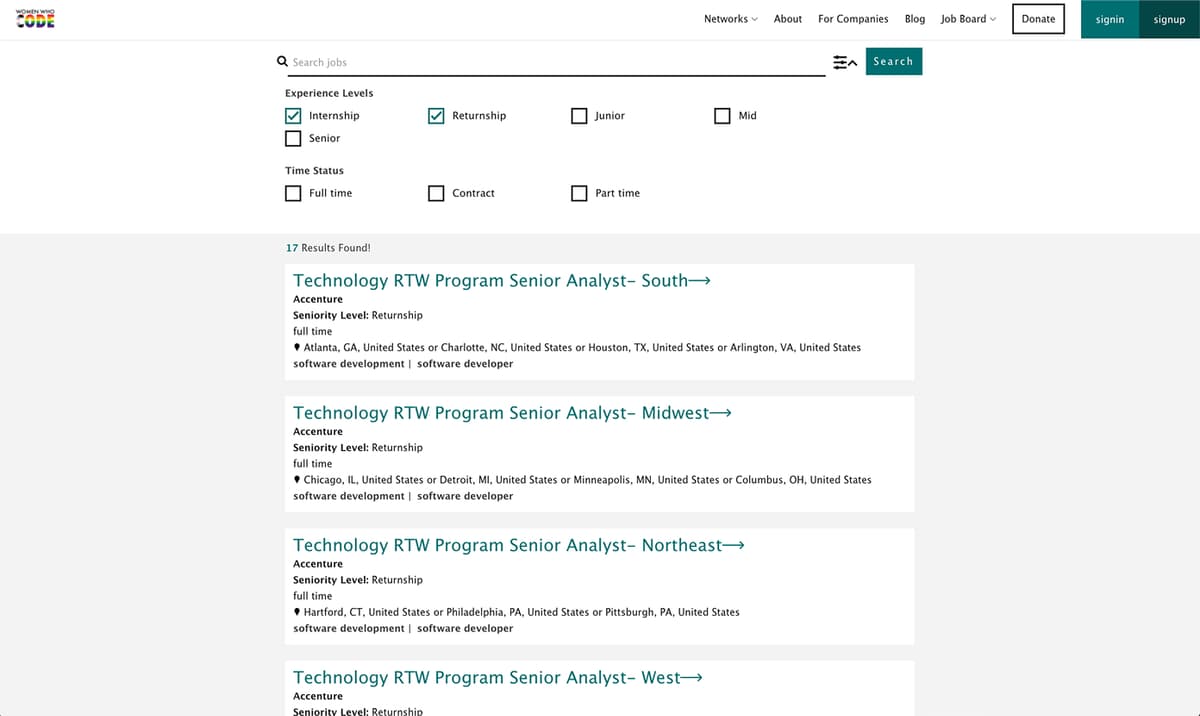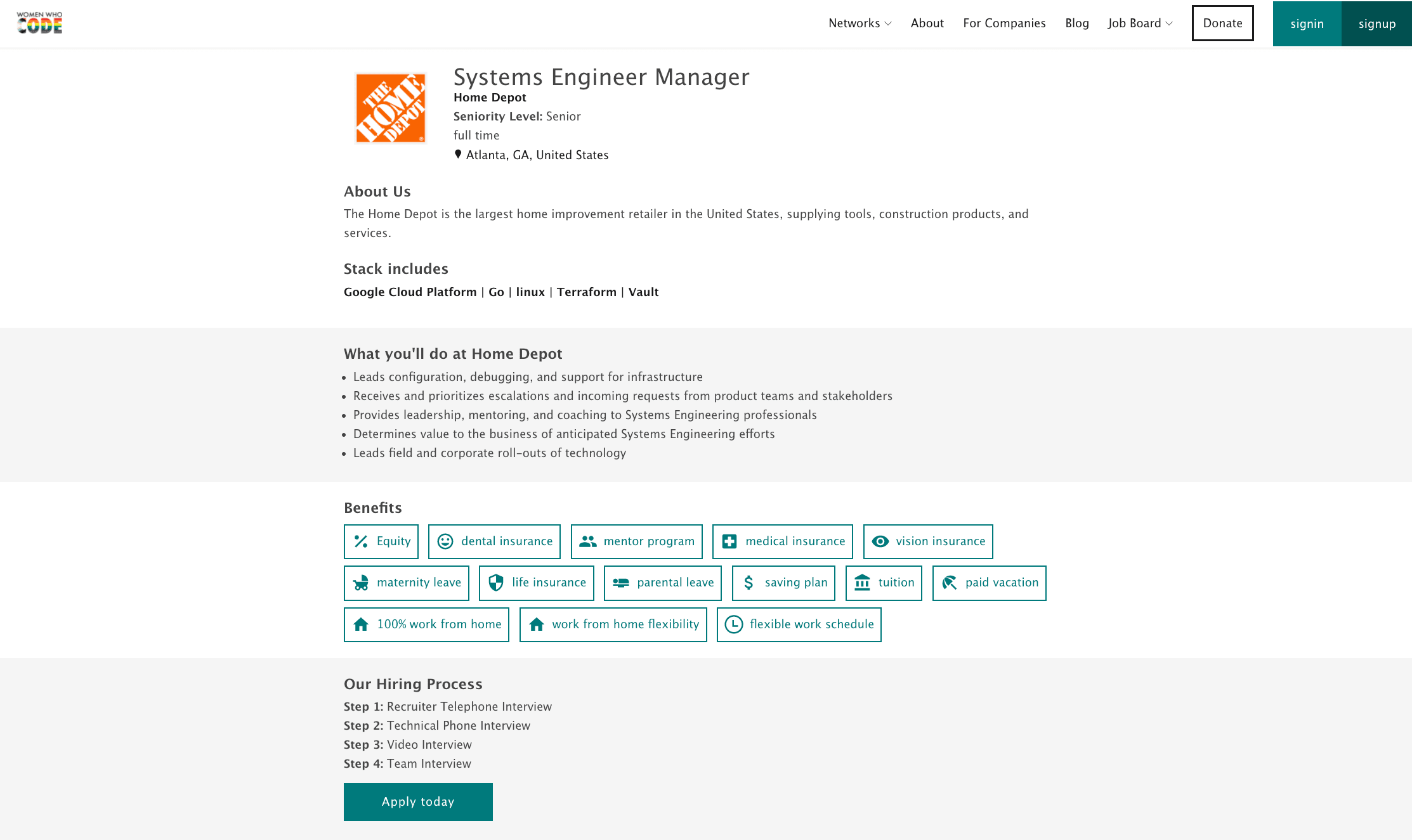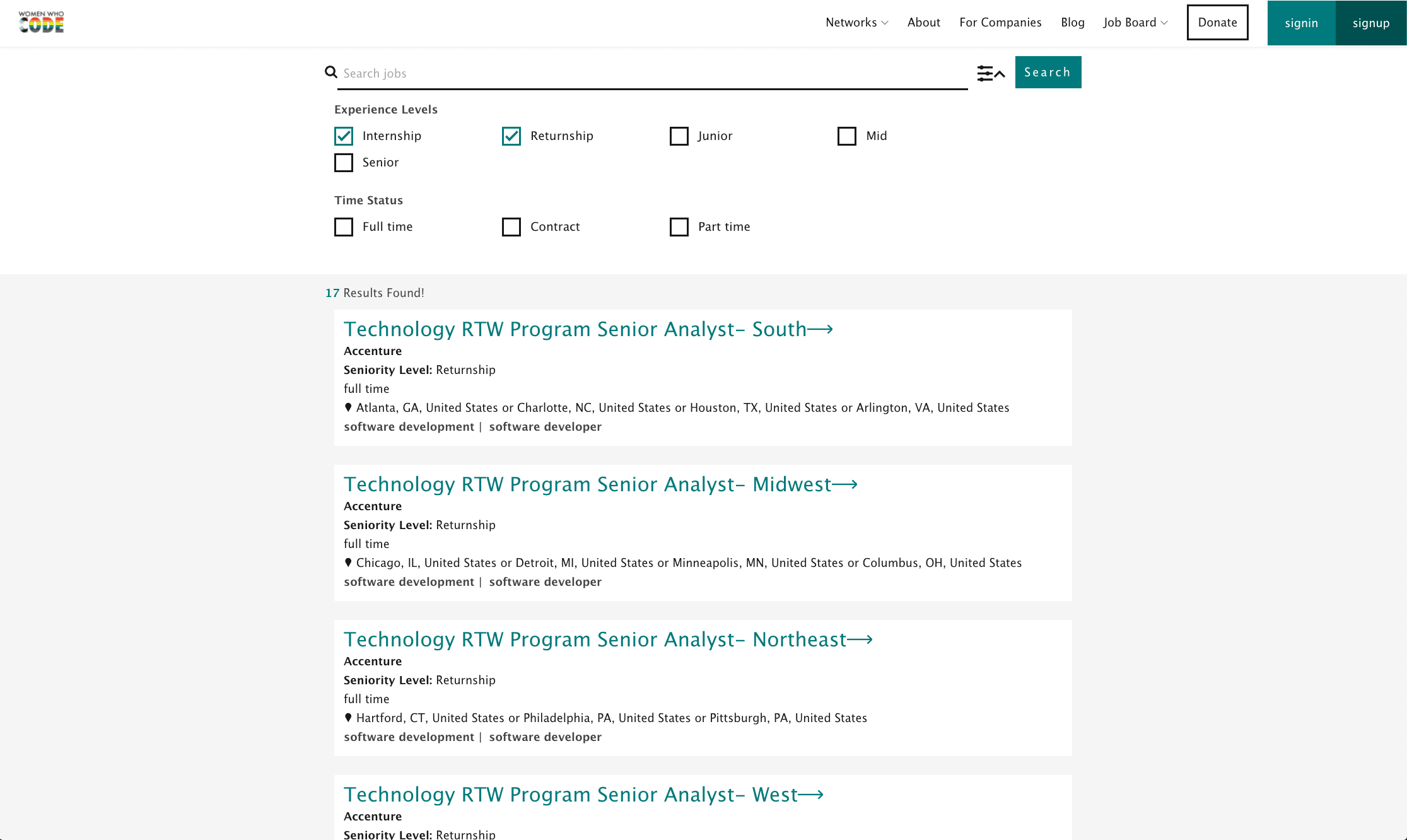Job Board

A New Era for Job Boards
Lead the Frontend, Reserch, and Design for the Women Who Code Job Board. The goal of this project was to create a reimagined job board for women at companies that are friendly to diversity and inclusion.
Within months, the proceeds from this project were enough to cover all of the core costs for the non profit. Women Who Code has since changed hands in 2024 , but this project is incredibly memorable.
Scope
Software Engineering
Frontend Implementation
This was a Ruby on Rails Project with a React frontend. Built from the ground up, this project was designed to be fully responsive and accessible.
Interesting findings from the project include:
- The job search form needed to have a submit button: Originally the job search would happen automatically depending on what you typed into the search bar but at the time that was not intuitive to our users as the filtered list updated too quickly. This was one of those times where speed was not our friend.
- Custom Tagging: Functionality was built to allow companies to tag their job with any relevant skills or technologies they wanted. Guardrails were added to prevent mispellings and to ensure that tags were relevant to the job posting.
- Tracking: Functionality was built to allow companies to track the performance of their job postings. This included analytics on views, applications, and other key metrics to help companies understand the effectiveness of their listings.
Research
Making a Job Board Inclusive
The goal for this job board was to make it as inclusive as possible. Study after study finds that women in particular face unique challenges in the job market, leading to the wage gap. Our research was aimed at how to encourage women to apply to jobs that they are both qualified for and interested in.This involved:
- Highlight Job benefits: Emphasizing benefits that are particularly appealing to women, such as flexible work hours, remote work options, and professional development opportunities. These are awkward to women to ask in the interview process, and this can make or break their interest.
- Decrease Job Requirement BloatLimit job requirements to the most relevant skills and experiences. Women will often not apply to a job if they do not meet every single requirement. All that is often needed is listing what stack they will be working in and what their day to day responsibilities are.
- Highlighting Returnships: These are programs designed to help women re-enter the workforce after a career break. By promoting returnships, we can encourage women to apply for jobs they may have previously thought were out of reach.
- Allowing Filtering by time status: This allows users to filter job listings based on their availability, such as full-time, part-time, or freelance. By providing this flexibility, we can attract a more diverse range of applicants, including those who may not be able to commit to a traditional full-time role.
- Highlighting Remote Roles: Women in Tech often prefer remote roles for their flexibility and work-life balance. By highlighting remote roles, we can attract more women to apply for these positions.
- Highlighting Interview Process on Job Listings: This is a unique feature that allows job seekers to understand the interview process before applying. By providing this information, we can help demystify the process and make it less intimidating, ultimately encouraging more women to apply.
- Emphasizing the need to post salary ranges: While this is not a requirement, it is a best practice that can help close the gender pay gap and promote transparency. By encouraging employers to share salary ranges in their job postings, we can empower women to negotiate their salaries more effectively and ensure they are compensated fairly for their skills and experience.
The result was a job board that was not only more inclusive, but also more effective at attracting and retaining women in the tech industry.
Design
Designing the User Experience
This was a green fields project that needed everything designed from the Job board, jobs, and the dashboard for companies to manage their job postings. The goal was to create a user experience that was intuitive and easy to use as to not make the job search process any more difficult than it already is. This was done by:
- Eliminating job content bloat
- Creating a new color palette that uses less colors to minimize cognitive load.


Compliance
Color Accessibility
In addition to UI design, this project required a drastic change to the Women Who Code Teal Brand Color in order to meet WCAG AA accessibility standards. This required a complete redesign of the color palette to ensure that all text and background combinations met the minimum contrast ratio of 4.5:1 for normal text and 3:1 for large text. The new color palette was carefully selected to ensure that it was the right balance between aesthetics and accessibility.